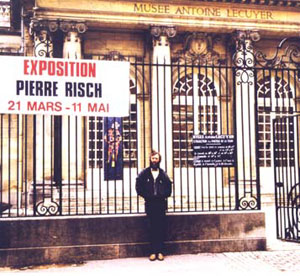Docteur en Histoire de l'Art
The Museum Antoine Lecuyer's Curator
Saint Quentin - France

Retrospective de Pastels Pierre Risch de 1981 a 1987
" Because we respect this spirit as defined above and we believe in it, we have chosen to exhibit today the work of Pierre Risch, one of these contemporary artists who has understood all the possibilities given by the use of pastels. For the past twenty years, Pierre Risch has focused mainly on work on paper, first Lithography, then Engraving, then Watercolour. So by a natural process he came to Pastels, guessing the satisfaction that the technique would give him, and wishing too that with his talent, he would give it back its true worth, or at least its own identity and its unique originality.
This is where the artist's worth lies : he is contributing back into favour an endearing technique which is too often thought as minor and which is so little - known. He shows us convincingly the various possibilities of plastic expressions that it offers artists of our time. Pierre Risch can also prove that Pastel is not only synonymous with soft colours and realistic portraits, flowers or landscapes. So when he discovers the Venice Carnival, he foresees that the theme will enable him to fully express what he wants to say.
He then becomes the First French painter who works on the theme of carnivals: Bale, Binche and mostly Venice that he has followed since 1981 and chosen (like a thunderbolt, the tltle of one of his paintings) to be the central core of his work as a pastel artist. "What a delight, what a wealth of colours and movement, what a treat for the eyes and the mind!" he says.